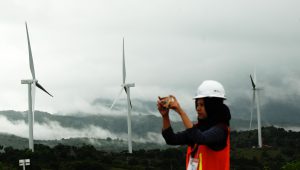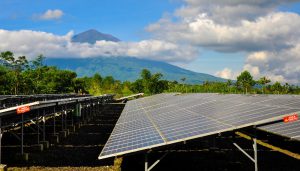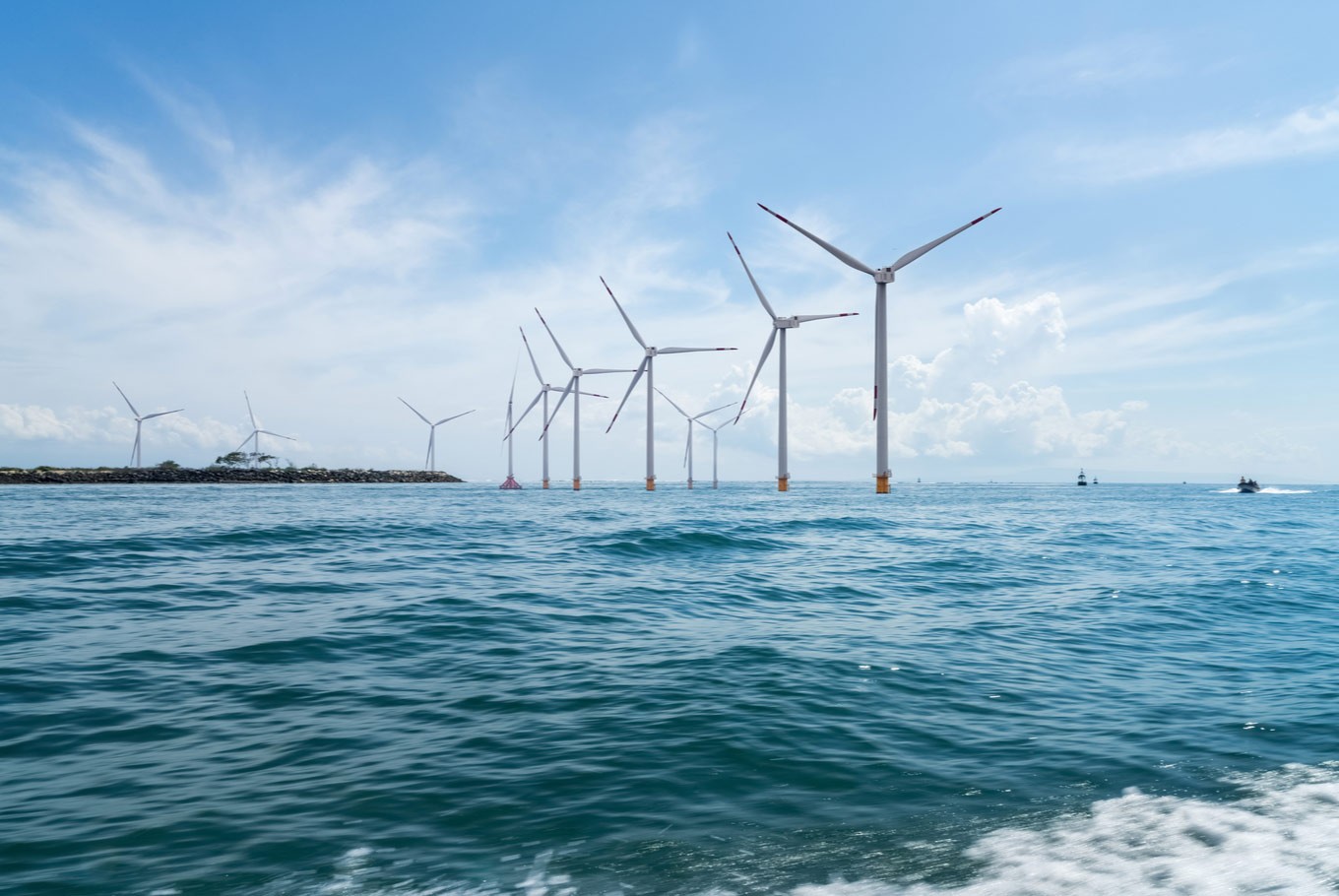SAMARINDA, Indonesia (AP) — The East Kalimantan region of Indonesia is where the country’s dependence on coal is most evident.
Driving on the road around the area, passersby can watch excavators dig coal from shallow pits while trucks laden with carbon-rich rock pass by. Under a bridge in Samarinda, the region’s capital, hundreds of giant, jet-black coal mountains lie on barges that are towed along the waterway, heading for factories across Indonesia or other countries.
They are attractions that Indonesia has committed to phasing out – or at least drastically reducing – by agreeing to a number of plans with international stakeholders, including the largest deal with the Transition Partnership. The $20 billion Fair Energy Exchange gets a big signing. While the agreements aim to turn one of the biggest coal-producing nations toward broader green energy sources, experts warn that financial, policy, infrastructure challenges need to be overcome. infrastructure and other challenges.
David Elzinga, principal energy expert at the Asian Development Bank, said Indonesia’s energy transition is “very unique” because of its high economic growth rate, geographical location, population center and clean energy potential.
According to the International Renewable Energy Agency, despite Indonesia’s energy potential from solar, hydroelectric, geothermal, wind and other sources, only about 12% of it is tapped. Nearly all energy needs are met by fossil fuels, with 60% coming from the highly polluting coal.
That means people like boat maker Jembong, 55, who, like many Indonesians who use only one name, can rely on solar energy for light bulbs or for watching television. But for the energy-intensive power tools he uses to build craft boats from his home on the island of Karampuang, he needs diesel engines.
“If I can’t use the diesel, I can’t work,” he said.

It has an impact on the environment: In 2021, Indonesia’s energy sector emissions will be around 600 million tons of carbon dioxide, the ninth highest in the world, according to the International Energy Agency. And population and economic growth are expected to triple the country’s energy consumption by 2050.
“It’s a challenging environment to make change while you have such remarkable growth,” says Elzinga. It is different from a developed country characterized by substantial financial resources and low economic growth.” Many more developed economies have stronger renewable ambitions, although no country currently matches the global climate goals, the researchers say.
Indonesian officials have signaled that they have begun to change: They have announced new regulations on solar energy, aiming to raise the electric vehicle market share in Indonesia to 25% of total vehicle sales by 2030. and have deployed charging stations. However, experts warn that Indonesia is lagging behind Southeast Asian countries.
Indonesia has voiced that it needs help from more developed nations.
“We don’t want to be constrained in terms of economic development,” said Deputy Minister for Maritime Coordination and Investment, Rachmat Kaimuddin. “Industrialized nations can support us.”
With the new JETP agreement, Indonesia will aim to reach net zero emissions from the power sector by 2050, exceed the target by a decade and reach peak emissions by 2030. Indonesia is increasing its utilization target. renewable energy to offset a third of total electricity production by 2030, which means doubling the current rate of deployment.
Financing remains an obstacle, said Elrika Hamdi, energy finance analyst at the Institute of Energy Economics and Financial Analysis. By one estimate, Indonesia will need up to $2.4 trillion in cumulative investments in the energy system by 2050 – a much larger number than is currently committed.
“We still have a long way to go to find out… how can we gather the financing to do this,” Hamdi said.
Grita Anindarini, program director at the Center for Environmental Law Indonesia, said the manner in which money is provided – be it loans, grants or other funding schemes – is also a concern.
“We just want to make sure these funds don’t lead to a debt trap,” Anindarini said.
Hamdi raised concerns about how the funds from the conversion plans were used. In a recent report, she criticized the “lack of disclosure on selection criteria” for plants acquired by Indonesia’s state-owned power company PLN for early retirement, including some will “beyond its useful economic life by 2055”. JETP funding may be used to support acquisitions.
“PLN should retire them within the next few years and get rid of them,” Hamdi wrote in the report.
Another concern raised by activists is that the JETP agreement does not specify what restrictions, if any, will apply to Indonesia’s construction of new coal plants, or whether Indonesia will be required to reduce coal export or not. A 2022 presidential regulation exempts construction of previously planned coal plants or those tied to strategic national projects.

Coal is a valuable part of the Indonesian economy, with the country being the largest exporter by tonnage in the world. Customers include China, India and Japan. The war in Ukraine has caused energy costs to spike, Hamdi said, and the price hike is likely to persist for the next two or three years.
“You can understand why they want to develop their industries and natural resources,” says Elzinga. “It is the responsibility of the development community and those who want to support Indonesia to come up with solutions that allow them to do both.”
In a written statement sent to the Associated Press, Darmawan Prasodjo, CEO of PLN, wrote that the company has canceled several coal-fired plants in its short-term business plan and is “committed to leading the way.” leading the energy transition in Indonesia.”
Muliawan Margadana, vice president of the Indonesian Mining Association, and experts raised concerns about the future of communities dependent on the coal industry, which accounts for 35% of East Kalimantan’s GDP and employs nearly 9%. population.
“More than 250,000 people are directly employed in the coal mining industry. If we count their families, about 1 million people are affected,” Margadana said.
But he says it’s possible to retrain workers – something Hamdi agrees.
“It is important and will be seen as equitable how the transition funds are allocated to help these affected workers, whether through upskilling, re-skilling or community development.
Daniel Kurniawan, a solar-focused researcher at the Essential Services Reform Institute, noted: Domestic energy policy has also not kept pace with the transition – especially solar, capital is the main source on the path to net zero in Indonesia.
There is a lack of a solid policy-making environment and political commitment for Indonesia, he said, to “transition to clean energy amid overcapacity due to its heavy reliance on coal power”. “Though that will certainly change with JETP.”
Geography presents another challenge. Elzinga said Indonesia is a large archipelago with significant differences in energy sources, distribution centers and populations. For example Java, the administrative center of the country, accounts for about 60% of the population and about 75% of electricity consumption, but represents only a small fraction of its renewable potential.
Although the challenges are diverse, they are not insurmountable, says Hamdi. Her organization and others are monitoring the development of the energy transition in Indonesia.
“We also have to keep an eye on how this energy transition will create a better impact and a better future for our community,” says Hamdi. “It has to be for all citizens.”



